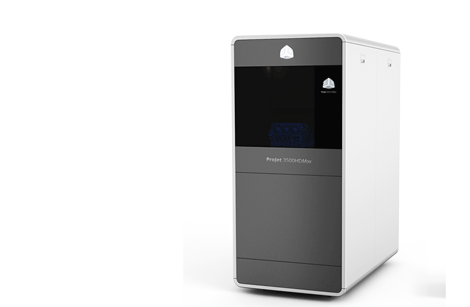
The 3D Systems ProJet 3500HD Max, possibly the best looking professional 3D printer you’re likely to find
It’s been another year of headline grabbing by 3D printing big guns 3D Systems (some more noticeable than others); by taking the opportunity to look at all its many divisions, you can see why.
Expanding from its stock SLA printers to acquire other 3D printer manufacturers, design houses, software companies, and flirt around with the consumer market, things haven’t stopped moving in some time. Yet what grabs you is the use of aesthetic design, colours, materials and user interface (UI) to take its machines and services that step further.
Its launch of the ProJet 3500HD Max not only unveiled an excellent tool, capable of printing six materials at four increasing definition settings, within a 298 x 185 x 203 mm, but also a machine that has been styled like a consumer product.
With design cues and a product finish hinting at an oversized iPhone, it is easily the best looking 3D printer on the market. Even the ZPrinter range has had a spruce up of metallic tones.
I know that these are industrial machines, but there’s no reason they can’t look better, right? If your company is spending thousands of pounds on something, there’s no reason it has to look like Picasso took up panel beating for a weekend.
Similarly, the new touch-panel computer has a UI that is bright, simple and quick to navigate, while its sister application can run on Apple iOS, transforming your iPad into a hub for managing print jobs on several machines remotely.
The screen-based soiree doesn’t end there: 3D Systems’ online print service Quickparts has had a UI rejig to make it a more efficient tool to order your parts to be printed online. An array of tick boxes allows the quick selection of materials, finishes and a catalogue of other details to be entered without fuss or confusion.
This is all pretty similar to what HP has been doing in the large format 2D printing market recently; making its tools look nice in the office of some pristine architectural practice.
HP is a much bigger fish in a bigger pond, but 3D Systems is taking a bold step in the same direction – they’ve got the technology, now they’re making it more accessible and, to a point, desirable through a purely visual means.






